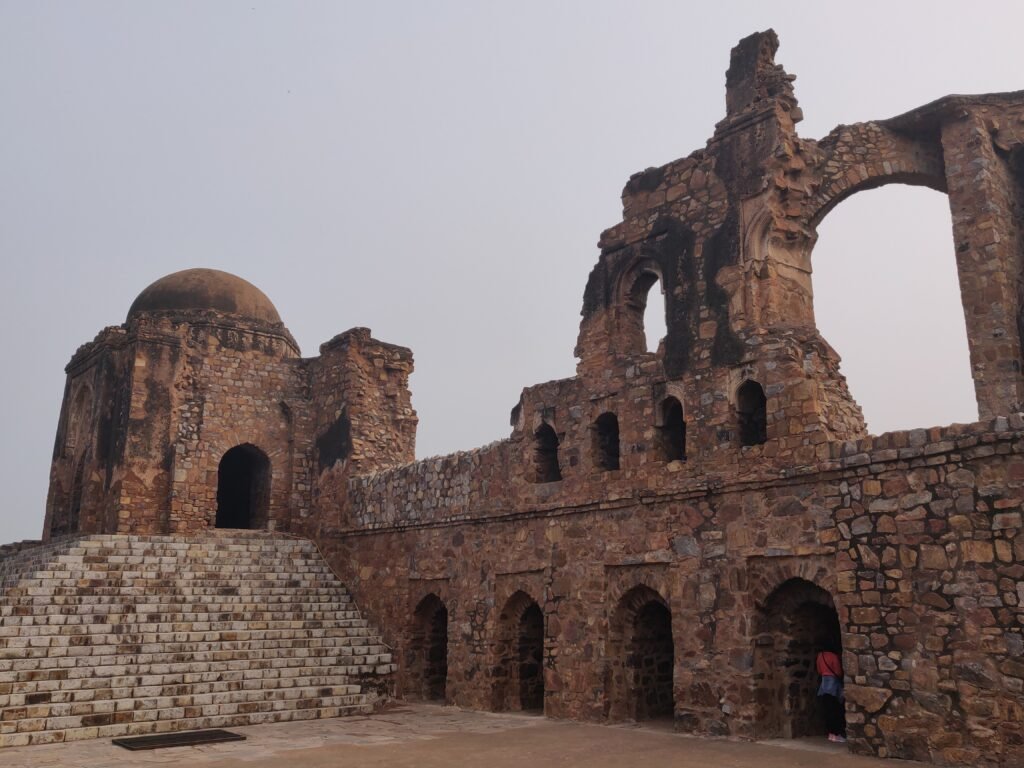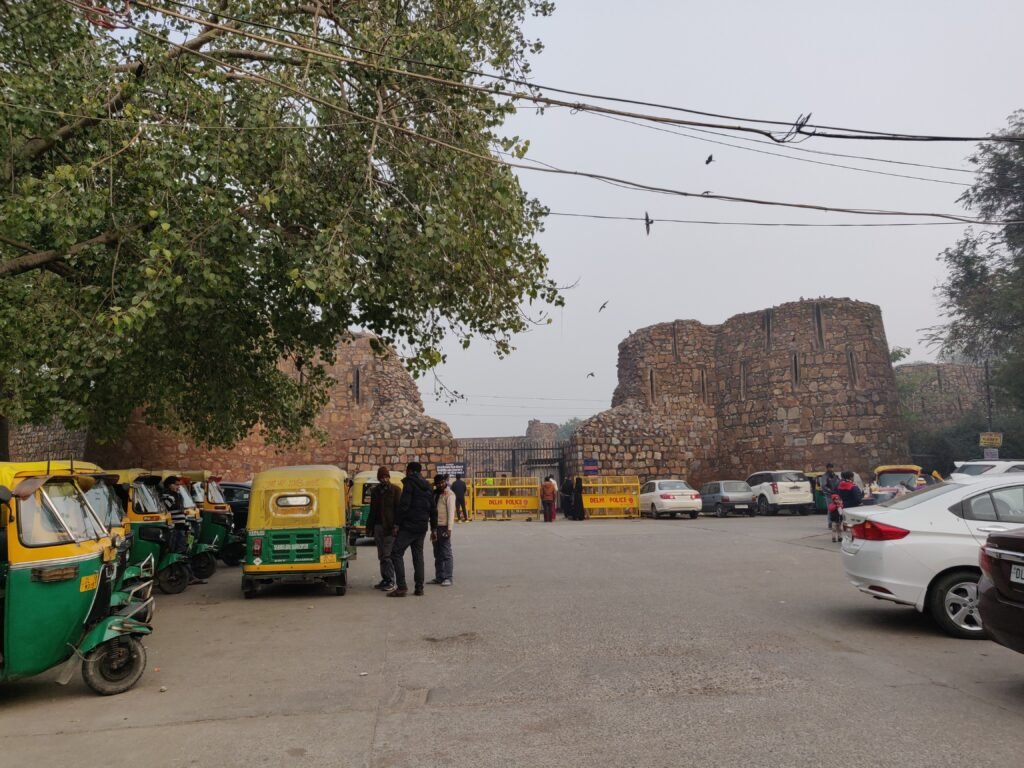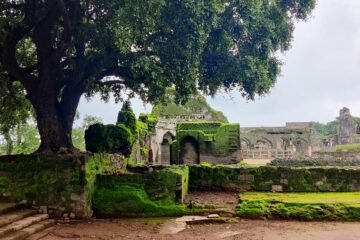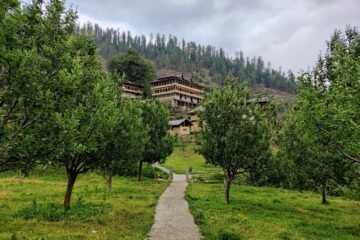Feroz Shah Kotla reminds me of some unforgettable words:
'Dilli tu baar baar barbaad hogi, Aur baar baar aabaad hogi'
Unknown
Anybody who really knows Delhi knows that Delhi isn’t a single entity, but a mosaic of cultures. It is as much Bengali as it is Punjabi. It is as much Hindu as it is Muslim. It is as much a student’s city, as it is a retiree’s. Delhi is a melting pot of different cultures and lifestyles— perhaps an endowment of the fact that this city has seen a succession of dynasties and cultures in the wake of multiple invasions. Historically, Delhi is seen to have seven (historians differ on this number, but seven is the minimum) cities built by the different rulers who ruled over it.
One such city is Ferozabad— the fifth historical city of Delhi. After Mehrauli, Siri, Tughlaqabad, and Jahanpanah came Ferozabad, or Firuzabad, built by the king of Tughlaq dynasty, Firoz Shah Tughlaq, in 1354 AD. And in Ferozabad was built the Feroz Shah Kotla. The word ‘kotla’ means fort, so Feroz Shah Kotla is, quite literally, the fort built by Firoz Shah Tughlaq.

Whispering Trees and Speaking Stones

It was one chilly winter afternoon that we finally got to visit this fifth historical city of Delhi. It is located near one of the main roads of Delhi, right next to a modern park. The moment one steps into the locales of the 700-year-old fort, the noise outside seems to go silent, and you enter a different era of time.
Everytime I go to a historical monument, the stones enthral me. I always wonder how much these stones must have seen. How much of history they must have witnessed.
Perhaps a little childishly, I feel like laying my hand gently on them and absorbing every bit of history they have seen. Who walked upon these paths? What did they look like? What did they talk about?
There are so many questions these stones could answer!
And so, when I entered the main entrance of Feroz Shah Kotla, I felt the same urge.
The Structure of Feroz Shah Kotla
We entered this fort complex from the West Gate. After the initial check-in with the ASI guards, we took a look around at the breathtaking walls, and read up on the structure of the Feroz Shah Kotla ruins.
The complex is briefly divided into four main parts— the fort ruins, an ancient masjid, a massive Ashoka pillar and a very special baoli.
Geometrically, Feroz Shah Kotla is an irregular polygon enclosed within a rectangular boundary. Not wanting to repeat the same mistake made by his predecessors whose cities had to be abandoned partly due to water shortage, Firoz Shah Tughlaq built his city near a perennial water source— the mighty Yamuna river. The eastern side of Feroz Shah Kotla lies parallel to the river. In fact, it is said that earlier a long staircase led citizens directly to the erstwhile Yamuna bank.
The Fort Ruins
Once you enter the main complex, vast, sprawling lawns with huge trees, hopping squirrels and chirping birds welcome you. And within those lawns stand the grand ruins of the Feroz Shah Kotla fort.
The majority of its building material has been marauded and reused by successive rulers to build their own monuments in Shahjahanabad (Red Fort area). Hence, only a few broken walls survive and the fort is almost unrecognisable in its features.
As per the signage, the slightly sloping walls of the citadel, or the core fortified area, were a massive 49 feet in height! These high walls had parapets (sort of like the boundary railing of present-day roofs) and merlons (vertical extensions of the roof boundary behind which guards could hide) on top. This type of design is called kangura, or battlements. They were used both for decorative purposes as well as defence. But now, only the arrow slits through which the citadel could be defended are visible. One can only imagine how impressive the structure must have looked from outside.
Even on the inside, nothing recognisable remains. But historians say that there were a number of rooms including a Palace of the Clayey court for the emperor to meet dignitaries, a Palace of Wooden Gallery for officers of the court, and a Palace of the Public Court where the emperor met the public. Although only ruins survive, the sturdiness of the walls is a reminder of how grand the whole citadel must have been.
The Ashoka Pillar at Feroz Shah Kotla
Just five minutes away from the palace ruins is the most unique aspect of Feroz Shah Kotla. It is a pyramid of cells topped by an Ashoka Pillar! This Ashoka Pillar was built 2000 years ago and was initially located 209km away in Topra Village, Yamunanagar district, Haryana. How did this massive pillar reach Feroz Shah Kotla?
To understand this, you must understand Firoz Shah Tughlaq a little. Firoz Shah Tughlaq, or Feroz Shah, was a great patron of architecture, and was one of the few rulers who got ancient monuments repaired, even those built by other dynasty’s rulers, like Qutub Minar.
He was the only emperor after Iltutmish to have brought Ashoka Pillars to be installed at his monuments. Historians differ as to why the pillars were shifted and installed in monuments, but Tarikh-i-Firozshahi says that when Firoz Shah Tughlaq saw the pillars, he was overcome with awe and decided to take them to Delhi as memorials of his power for future generations. During his lifetime, Feroz Shah shifted four such pillars, one of which has been installed at Feroz Shah Kotla.
Interestingly, nobody at the time of shifting knew what the meaning of the pillar or its inscriptions was. In fact, they believed that the pillars had been there since the time of Pandavas, and were the sticks used by the mighty Bheem to gather his cattle. However, due to James Princep’s efforts in the 1800s we now know that the initial inscriptions, written in Prakrit language in Brahmi script, are Ashokan inscriptions about the rules of Dhamma in society. In fact, it is the only Ashoka Pillar to have seven Major Pillar edicts inscribed on it. Ashoka’s Major Pillar edicts are royal orders concerning politics and morality in society. The later inscriptions are in Pali and Sanskrit, and describe the victories and achievements of the Chauhan dynasty.
From Haryana to Delhi
The Topra pillar towering above Feroz Shah Kotla is 43 feet high and is made of highly polished sandstone. In the time of Firoz Shah Tughlaq, it was called Minar-i zarin. This is because on a sunny day, it is said to shine like gold. This is even today, after 2000 years of its creation. So grand is the pillar that while we could not reach the pillar because of the pyramid of cells being closed, we could still see the inscriptions on the pillar.
The story of how the Topra Ashoka Pillar reached Feroz Shah Kotla is also a fascinating story by itself. When Firoz Shah Tughlaq decided to remove the pillars from the Yamunanagar district of Haryana, all local residents were asked to come out and use whatever tool they had to dig it out. As the pillar was being dug out, silk cotton from silk cotton trees was laid on the ground to give a soft padding to the pillar when it fell.
After the pillar was laid on the ground, it was covered with reeds and raw skins to protect its surface during travel. Then a special 42-wheeled vehicle with 200 men carried it to Delhi. The Yamuna was crossed using special boats. And finally the pillar reached Feroz Shah Kotla.
At the palace, Feroz Shah wanted the pillar to be erected on a supporting base. Hence, the three-tiered pyramid of cells was built. The pillar was so massive that its erection was done in steps. The first tier of cells was built, and then the pillar raised on to it. Then the second tier was built, and the pillar raised on to that. Lastly, the third tier was built, and the pillar on top of that.
Finally, the Ashoka pillar had to be erected. For this, massive ropes were tied to it at multiple levels, and supporting protective structures built around it. It was then pulled straight degree by degree in multiple days. Afterwards, decorative friezes (decorative strip) were made on its capital (crown/head) and a copper cupola (kalash) anointed on its top. However, these additional structures were lost due to damage done by subsequent rulers to the city.
In spite of the damage done by man and time, the Ashoka Pillar still stands tall. If you ever happen to see the Topra pillar, remember what a miracle it was to bring it there.
The Unique Baoli
A very important structure of the Feroz Shah Kotla, perhaps the one most important for its survival, is the baoli. This is the only baoli in Delhi which is circular in shape, and one of the few where the reservoir is connected to the tank. The baoli isn’t opened for the general public, but the signage shows a great photograph of it.
During the peak of Ferozabad, this baoli served as an important source of water for the central citadel, as well as for watering the gardens. According to some sources, the roof and as well as a part of the stepwell was used by the Tughlaq dynasty emperor, Firoz Shah Tughlaq, for recreational purposes.
Structurally, the baoli is also unique because unlike other old baolis, it does not have steps leading down to the level of the water. Rather, there is a bucket on a pulley which can be used to lift water. The central circular water reservoir is surrounded by two storeys of rooms and a roof which earlier had a railing and pillared kiosks called chhatris.
But apart from being a place of administration, with a unique life-supporting baoli and an astonishing show of power in the Topra Ashoka Pillar, Feroz Shah Kotla was much more. It was a place of devout worship. And today, even after centuries of existence, the ruins continue to provide sanctuary to hopes and prayers of those in need.
Perhaps in these days of modern stesses, even more so.
Find out more about the Jami Masjid and this very important aspect of Feroz Shah Kotla in the next article.
References
- HM Elliot & John Dawson, Tarikh I Firozi Shahi – Records of Court Historian, Sams-i-Siraj: The History of India, as Told by Its Historians, Volume 3, Cornell University Archives
- Vikramjit Singh Rooprai, Delhi Heritage: Top 10 Baolis, Niyogi Books
- Prinsep, J (1837). “Interpretation of the most ancient of inscriptions on the pillar called lat of Feroz Shah, near Delhi, and of the Allahabad, Radhia and Mattiah pillar, or lat inscriptions which agree therewith”, Journal of the Asiatic Society
- Archaeological Survey of India signboards at Ferozshah Kotla
- www.wikipedia.in



Beautifully written. While reading I felt the roughness of the stoney walls.
Thanks Varsha. And I find the stones of these monuments fascinating too!